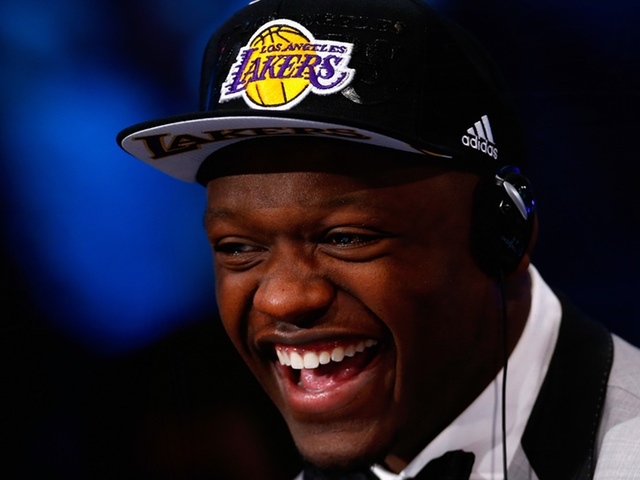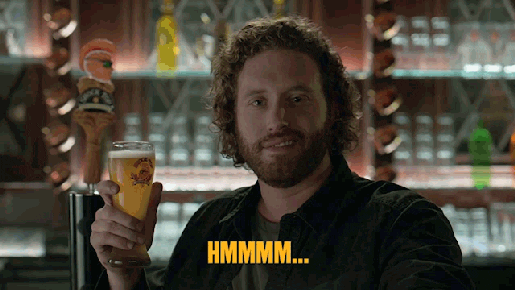comptonprince
Banned
- 8,744
- 2,221
- Joined
- Dec 26, 2014
That's for damn sure.....No matter what they do they arent going to trade him across the hallway to the Lakers.
Follow along with the video below to see how to install our site as a web app on your home screen.

Note: this_feature_currently_requires_accessing_site_using_safari
That's for damn sure.....No matter what they do they arent going to trade him across the hallway to the Lakers.
I never ever ever want Blake in a laker uni. I don't care about his baseless, weak minded stats.
The Lakers have made trades with the Clips before, not since '83, but it's happened. Maybe with Doc running things there's a better shot.
What if Kobe wanted to be a head coach.....?????
 HE WAS,,HIS last two years in Lakers uniform
HE WAS,,HIS last two years in Lakers uniform 
Higher chance of Doc being fired than the Clippers trading us Blake, IMHO.
Trade multiple players to get BG, a playoff under performing injury case?
After the Clipps have their best run while he was out.
Really?

Griffin is awesome, but no.
I'd wait until 2017.
http://www.poundingtherock.com/2014/7/16/5903679/spurs-assitant-coach-ettore-messina
"Messina is 54 and has been coaching at a high level for 25 years. He started his career in the franchise now known as Virtus Bologna in 1989. He coached there for nine years in two different stints, including one in which he coached Manu Ginobili and his team to an Euroleague title in 2001. After his extremely successful first stint in Bologna, he took over the Italian national team, which he led to a second place in Eurobasket, losing the finals to a stacked Yugoslavia team. Following that tournament, Messina went back to coaching in the Italian league, including his second stint with Virtus and three years with Benneton Treviso. After that successful early career in his home country, he made the move to Euroleague giant CSKA Moscow. his first four seasons with Mikhail Prokhorov's CSKA, Messina led his team to the Euroleague finals, winning two titles and losing two to Greek powerhouse Panathinaikos. At that point Messina was considered to be arguably the best coach in Europe and European giant Real Madrid came calling. Unfortunately, Messina couldn't find success in Spain amid a pressure-filled and unstable environment, and after two seasons he resigned. He's still not remembered fondly in Madrid and that stretch is the one black mark on his resume. Having won the Euroleague four times already and fresh off a disappointing turn with Real Madrid, Messina decided to change gears and make the jump to the NBA, as a consultant to Mike Brown with the Los Angeles Lakers. Once Brown was fired, Messina returned to Europe for a second stint with CSKA Moscow in 2012. In two years in Russia, he led his team to two Euroleague Final Four appearances. After a devastating one-point loss to now Cavs coach David Blatt's Maccabi Tel Aviv, he was hired by the Spurs."
OFFENSE:
Interview from euroleague.net
http://www.euroleague.net/features/fanmail/euroleague-2013-14/i/134222/ettore-messina-cska-moscow
Coach Messina, what is your personal preference between set plays and generic motion offenses? Here in America it seems that a lot of coaches have been leaving behind the idea of set plays in preference of providing their athletic guards more creativity with a motion offense. I was just curious what your preference was and why. Travis Nyce, USA
"I don't have a preference for set plays or motion offense because I think that the most important thing is to have balance in your offense: ball movement, players movement and balance in the sense to have the ball reversal or to play inside/outside; throw the ball inside to the low post and then throw it out to get good shots. So, I think that you can get and you must get these four things in whatever kind of offense you run, depending on the players that you have."
The following excerpt is all from http://bmsi.ru/doc/f0fc952d-7d16-48ba-add3-dca393d2322f
The offensive system we adopted last year can sometimes appear complicated for our players, because it demands mental attention and a good mastery of individual offensive fundamentals. In this article, we’d like to examine the guidelines of this particular offensive system.
For starters, we don’t think that our offensive system is all that original. What makes it different are not the plays, but how the players apply the various ideas that are behind each play.
Our coaching staff spends a lot of time trying to figure out how we can utilize the best characteristics of our players on offense. This is a long process and sometimes we can’t find an exact role for each of our players right away. We strongly believe that, beyond the offensive choices, we have to take care of the players’ improvement, putting them into the best conditions to be dangerous on offense: we want to be effective using the players’ skills.
The general idea of the CSKA offensive system that eventually led us to our system of play was the conviction that it is certainly not the set play or playing free that makes the difference in a game. Rather, is was the ability of our players to understand what the defense was doing and to always be conscious of any changes that they were making. Our players must be able to read the defensive behavior of their opponents. Any offense can be original, but if the player on offense is not able to understand what the defense does, he loses effectiveness and our offense slows down. The strength of our offense depends on the options that the players have at their disposal after reading (and attacking) the defense. This special knowledge takes a while to be completely understood by our players.
TRANSITION OFFENSE IMPORTANCE:
We make great use of offensive transition, the changing phase from defense to offense. These are not simple phases of a primary and secondary fastbreak, but an offense that is run full court with no interruptions. Our team has to move like a wave, where our players run at medium-high speed, occupying our offensive spots and trying to get any advantage they can before the defense is set.
At least 80% of the teams in Europe play transition pick-and-roll, and we did too, especially when we had Theo Papaloukas as a point guard. He was so good, not only at finding easy shots or for his ability to get fouled, but because he could find free teammates for the open shot.
The main goal of the offensive transition is not to try for a shot on the first option, but to attack before the defense has a chance to set up, making sure to get the ball moving around.
Playing in transition is the distinguishing mark of a team that plays the more interesting basketball to watch, but to play in this way it is necessary for players to understand basketball fundamentals and to have an extreme awareness of the rhythm of the game. To control this kind of situation, especially when we play away from home, we play in transition. Our first goal is to give the ball to the center after penetrating inside the defense. In this way, we create a situation where the defense must react and where we now have a precise rhythm for our offense after the ball has gone inside.
IMPORTANCE OF PLAYING THROUGH THE LOW POST:
With the ball in the low post, teammates typically stop and see what happens. This short moment of pause determines the correct timing of the action next to come. We carefully took the statistic of how many times we bring the ball into the heart of the defense (diagr. 2), either with a pass or a dribble penetration.
For our offensive rhythm, it is critical that the ball find its way to our inside player. Playing the ball only on the perimeter creates a lot of difficulties for our offense and, as a result, it becomes harder to win games. On the other hand, getting the ball inside gives us balance and allows us to attack the heart of the defense, where we know that the opposing teams have a defensive organization ready to counteract. Therefore, we must be ready to play against this reaction in order to take an advantage and get an uncontested shot at the basket.
Over the years, we realized that we must aim to have at least 20 shots coming from these low-post situations. Moreover, in the initial phases of the games where the referees are very demanding, our powerful inside game causes many of the opposing big men to get into early foul trouble. This limits their time on the court and we look to take advantage of that. Losing a defensive big man or two early in the game frees us to make more penetrations to the basket.
MAXIMIZING SHOT OPPORTUNITIES:
Another goal of our offense is to attack their best scorers. We want that their best scorer working hard on defense to therefore limit him and put him in possible penalty situations. By getting this player in foul trouble, we gain another advantage while the opposition loses one.
In short, our offensive aim is not just to take a shot, but to find various ways to produce even more shots. We don’t want to take a shot that the defense wants us to take. Rather, we want to take advantage of our offense, keep the players moving on the court, and increase scoring opportunities with several passes.
PASSING:
In our practice sessions, we stress the great importance of being able to pass and receive the ball. This has always been our job. When we were at Virtus Bologna (Italy), with Ginobili and Jaric, we worked a lot on passing: When and how to pass the ball was a primary goal and we quickly saw that it helped improve our game. We worked on passing into the center playing in the low post. We taught our players how to get the ball in that delicate situation, and how to reverse the ball side. Getting back to what we were saying at the beginning, the play itself is not the important thing. Rather, it’s how players react to the defense and make use of the fundamentals at particular parts of the game.
Players must understand what needs to be done after the defense gets to work. They need to know what happens when the center is double teamed, how to move off the pick-and-roll, and how to position themselves in order to attack the weak points of their opponents. This is not an immediate process, but something that is built gradually as the young players learn the game. They must come to learn that at every ball possession,we must produce something, whether it be through a series of well-executed passes, or by reading a mismatch on the court and quickly exploiting it.
DEFENSE

no need to trade for BG if he can become available in 2017.
but its funny seeing that people don't want him on this team like he's the plague. i wonder if the same things would be said he if was a FA.
I'll say it: I don't want him because I don't like him.
Him and CP's antics are disguising from a fan's perspective, and tired from a ref's perspective. And once the refs are annoyed w/ you, you'll go nowhere. So many teams have shown this throughout sports.


U Been drinking?
Exactly.
That kind of mess.
And someone might say, "Ummm, Artest is your boy."
Yeah, because Artest is A) really good at basketball, and B) effing crazy. Like not right in the head.
Blake and CP are just annoying brats.
Huge difference.